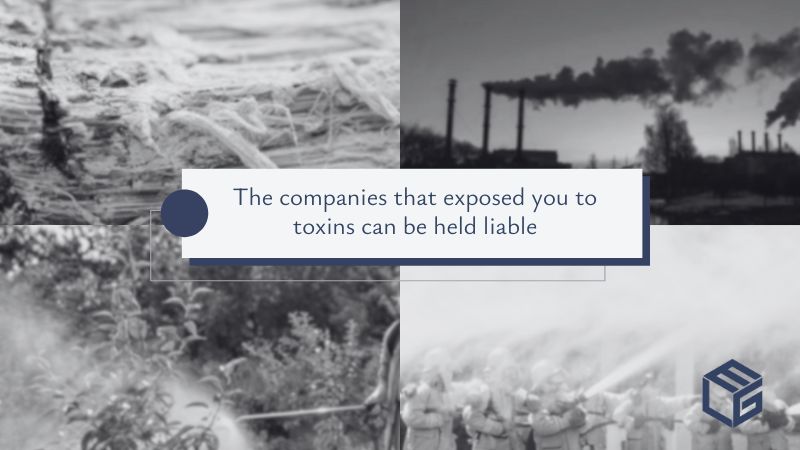A & I (Asbestos and Insulation Corporation)
Aerojet Rocketdyne Holdings
Altitude Crop Innovations LLC
Anaconda Wire and Cable Company
A.P. Green Services, Inc.
A.P. Green Services, Inc.
ABB Lummus Global
Advance Auto Parts, Inc.
Alabama Power
Alfa Laval, Inc.
Allis, Inc. (McNally Wellman Co.)
Amatex Corporation
Amax Phosphate, Inc.
American Biltrite, Inc.
American Can Company
American Cast Iron Pipe Co. (ACIPCO)
American Crane Corporation
American Cyanamid Company
American Locomotive Company Cooke Works
American Oil Company
American Olean Tile Company
American Optical Company
American Standard, Inc.
Anchor Packing Company
Andco, Inc.
Anderson Electric
Anheuser Busch LLC (Crown Beverage Packaging LLC)
Anniston Army Depot
API, Inc.
Aramark Services, Inc.
Armco, Inc.
Armstrong International, Inc.
Arnold Industries
Atlantic Land Corp.
Atlantic Richfield Company (ARCO)
Aurora Pump Company
Autry Greer & Sons, Inc.
AVCO Aerostructures
Avondale Mills, Inc.
Avondale Shipyards, Inc.
Bae Systems Norfolk Ship Repair, Inc.
Baker Tubular Services (Plastic Lone Star Steel)
Bath Iron Works
Bayonne Shipyard
Baxter Healthcare Corp.
BE&K
Beazer East
Beaunit Mills
Bechtel Corporation
Beech Aircraft Company
Bell Asbestos Mines
Bergen Tile & Linoleum Co.
Berman Brothers Iron & Metal Company, Inc.
Bestobell Steam Traps
Bestwall Gypsum Company
Bexar Canyon Management
Bird Corporation
Birmingham Ornamental Iron
Blackfeet Indian Developers, Inc.
Boise Cascade Corporation
Borchers Brothers Building Supply
Brantley Construction Company, LLC
Brauer
Brewster Bartle Drilling Company, Inc.
Bridgestone Americas Tire Operations LLC
Brown & Root, Inc. (Houston Lighting & Power Company)
Brunswick Corporation
Buckeye Fire Equipment
Buffalo Pumps, Inc.
Burlington Industries
Burlington Northern Railroad
Burnham Corporation
Burns and Roe (POWERS Engineers)
C.E. Thurston and Sons
Caldwell Foundry
Campbell Soup Co.
Caterpillar Inc.
Central Foundry
Cessna Aircraft Corp.
Champion International Corp.
Chase Brass and Copper Co. Inc.
Chattanooga Coke & Chemical
Chemguard
Chicago Bridge Iron
Chubb Fire
Cincinnati Milacron, Inc.
Citgo Refinery
Cleaver-Brooks Company
Commonwealth Electric Company
Comprehensive Designers of Philadelphia
Congoleum Corporation
Connecticut Light & Power Company
Conner Steel Products
Conoco
Continental Steel Corporation
Corteva
Courtaulds (Fiberco)
Crown Cork & Seal Company, Inc.
East Bank Industries (Benders Shipbuilding)
Eastern Cold Storage Insulation Company
Eastern Company
Eastman Kodak Company
Economy Furniture Industries, Inc.
E.J. Codd Company
Electric Boat Corporation
Ellard Contracting Co., Inc.
Energy Future Holdings
Erie Lackawanna Railway
Esso Standard Oil Co.
Exxon Car Care
Exxon Company USA
Exxon Mobil Corporation
Faulk Company
Federal-Mogul
Firestone Coated Fabrics
Fisher Scientific Company
Flowserve Corporation
Fluor Daniel Services Corporation
Forster Manufacturing Company
Foseco, Inc.
Foster Wheeler Corporation
Frosty Morn Meats, Inc.
Fuller-Austin
Gardner Denver, Inc.
General Construction Services
General Dynamics
Genesco, Inc.
Gillette Company
Glacier Park, Inc.
Goodrich Corporation
Goodyear Tire & Rubber
Goulds Pumps, Inc.
Grossman's, Inc. & Subsidiaries
Gulf Coast Marine Builders, Inc.
H.B. Zachry Construction
H.K. Porter Company
Hamilton Associates, Inc.
Hanson Scale
Helm Agro
Hilde Construction Company, Inc.
Hobart Brothers Company
Hollingsworth & Vose Company
Honeywell Heating
Hughes Tool Company
IBP, Inc.
Industrial Piping & Engineering Corp.
Ingersoll-Rand Company
International Creosoting & Construction Co.
International Paper Company
J.H. France Refractories Co.
J.M. Turner & Company Inc.
J.P. Stevens & Co., Inc.
J.T. Thorpe
Jackson Chair Company, Inc.
James B. Donaghey Inc.
James River Corporation
Jefferson Foundry Co.
Jersey Central Power and Light Company
Jim Walters Resources, Inc.
John Crane Company
Kaiser Aluminum
Kalmar Steel Corporation
Kansas City Power & Light Company
Kearney Powerhouse
Kelly-Moore Paint Company
Kelsey-Hayes Company
Kentucky Textile Industries, Inc.
Kerr-McGee
Kidde Fire Fighting
Kimbell Foods, Inc.
Kimberly-Clark Tissue Company
Koppers Company, Inc. (Woodward Iron Co.)
L&N Railroad
Lake Charles Stevedores, Inc.
Lane Furniture Co.
Lear Siegler Products, Inc.
Legacy Vulcan, LLC
Leslie Controls
Levingston Shipbuilding Company
Leviton Manufacturing Co. Inc.
Limbach Construction
Lincoln Electric Company
Lion Chemical Corporation
Lockheed Martin
Lufkin Iron Foundry
Luntz Corp.
Lykes Bros.
M.H. Detrick Company
M.W. Kellogg Company
Magotteaux INC
Marathon Oil Corporation
Marcal Paper
Maremont Gabriel
Martin Marietta Technologies, Inc.
Maryland Cup Corp.
Maryland Drydock Company
Masonite Corporation
Masterson Company, Inc.
McAbee Construction
McDonnell Douglas Manufacturing
Medite Corporation-Lumber Division
Metalclad Insulation Corporation
Millstone Point Nuclear Power Plant
Milwaukee Valve Company
Minnesota Mining and Manufacturing (3M)
Monsanto
Montgomery Ward & Co.
Moorman MFG. Co.
Morgan Drive Away
Moss-American, Inc.
National Automotive Parts Association
National Foam
National Homes Construction Corp. (Burton Plumbing & Heating Co., Inc.)
National Service Industries Inc.
National Steel Erectors Corp.
Nicolet Keasbey & Mattison
Norfolk Southern Railway
Northrop Grumman
Norton Air Force Base
Novartis Corporation
O'Connor Terminal Co. Inc.
Occidental Petroleum Corporation
Offshore Trawlers, Inc.
P & H Mining Equipment, Inc.
Pacor Incorporated
Pan-Am Southern Corp.
Pan American World Airways Inc.
Papco Inc.
Pearson Roofing and Siding
People Gas Light & Coke Co.
Peter Kiewit Sons Company
Picatinny Arsenal
Pine Bluff Arsenal Chemical Plant
Piper Aircraft Corporation
Plant Insulation
Porter Brown Limestone Company, Inc.
Porter-Hayden
Procon Incorporated
R&B Falcon Drilling
Rauland Corporation
Raychem Corporation
Reeves Brothers Inc.
Republic Powdered Metals
Riley Stoker Corporation
Royal Industries, Inc.
Rust International Inc.
Rutland Fire Clay
Sanderson Farms, Inc.
Sanyo Automotive Parts, Ltd.
Scotch Plywood Company
Sellers and Sellers Company
Shambaugh & Son, Inc.
Shell Oil Refinery
Shook & Fletcher Insulation Company
Sid Harvey Industries, Inc.
Skinner Engine Company
Southern Company Services
Southland Oil Refinery
Southwest Electric Power Co.
Spirax Sarco, Inc.
Springs Industries, Inc.
Standard Brake Shoe & Foundry Co.
Standard Coosa-Thatcher
Stearns Roger Corp
Steel City Products, Inc.
Steiner Shipyard, Inc.
Stockham Valves and Fittings
Stone & Webster
Sun Oil Co.
Sunbeam Products
Swan Asbestos and Silica
Syd Carpenter Marine
Syngenta
Synkoloid Company
U.S. Steel
Unarco (Union Asbestos and Rubber Company)
Union Tank Car Company
United Gilsonite Laboratories
United Land Corporation of America
United Phosphorus
Urethane of Kentuckiana, Inc.
UTC Fire & Security America’s Corp.
Utex
Vermont Asbestos Group, Inc.
Viking Pump, Inc.
W. Whitney Stueck, Inc.
W.A. Fletcher Company
Warren Pumps, Inc.
Weil-Mclain Co.
Wells Lamont Corporation-Delaware
Western Electric Company
Western MacArthur
Westinghouse Electric
Westpoint Stevens, Inc.
Wheelabrator Frye Inc.
Williams Holdings
Wiregrass Construction Company, Inc.
Woodward Corporation
World Wide Construction Services
Zenith Electronics Corporation
